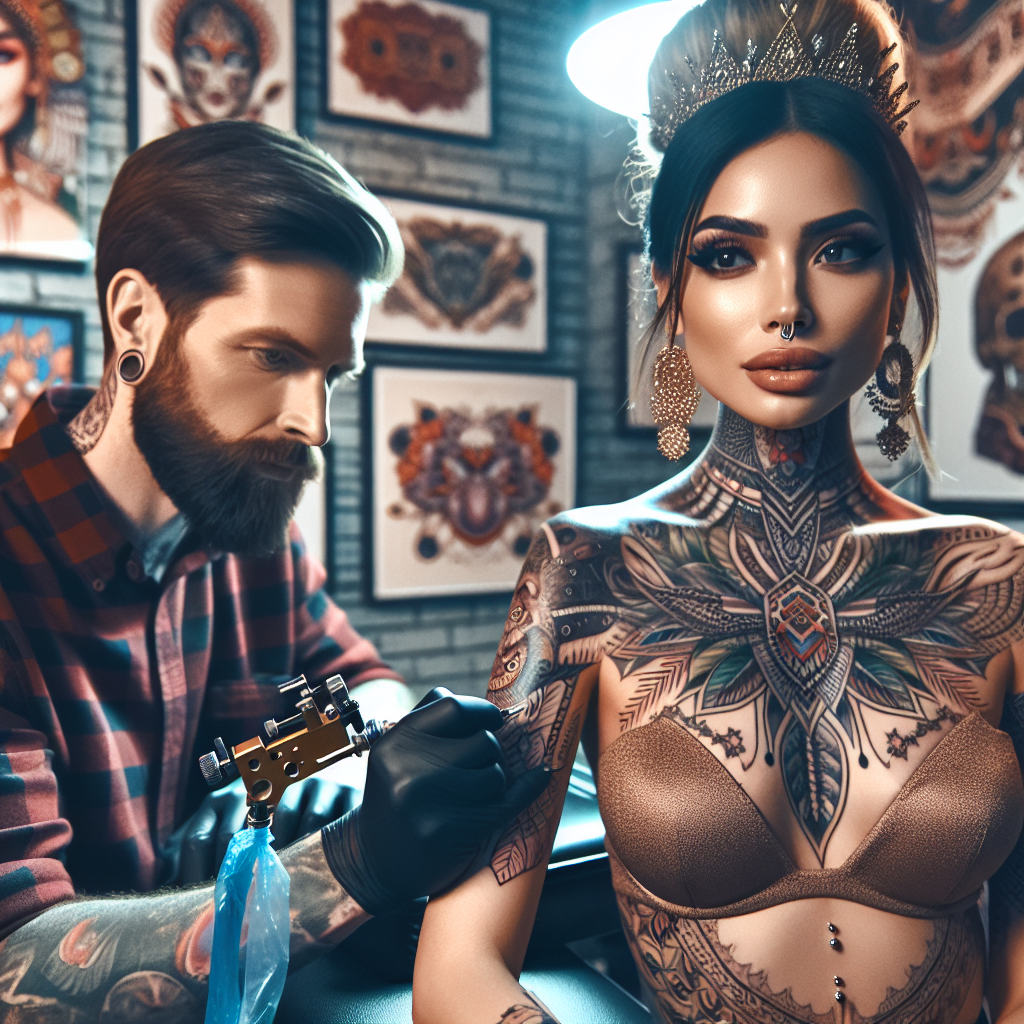
Get at least 6 FREE Stock Shares today
# The Beginner’s Guide to Getting Your First Tattoo
Tattoos have transcended mere body art to become profound markers of personal history, identity, and cultural heritage. If you’ve been contemplating your first tattoo, you’re probably filled with both excitement and apprehension. This comprehensive guide will walk you through everything you need to know about getting your first tattoo and explain how the experience can positively impact your life.
## 1. Understanding the Essence of Tattoos
### A. What is a Tattoo?
A tattoo is a form of body modification where ink is injected into the skin to create designs, symbols, or textual elements. Historically, tattoos have served various purposes across cultures—from marking rites of passage, denoting social status, to acting as symbols of rebellion.
### B. The Emotional and Personal Significance
For many, tattoos are not merely aesthetic; they hold deeply personal meanings. They can symbolize life experiences, memorialize loved ones, commemorate achievements, or express beliefs. Understanding this emotional landscape is essential when considering your first tattoo.
## 2. The Positive Impact of Tattoos
### A. Boosting Self-Expression
Tattoos offer a unique medium for self-expression. They allow individuals to embody their beliefs, experiences, and personalities visually. This can foster a sense of identity and belonging, especially for those who feel like outsiders in traditional settings.
### B. Building Confidence
For many, having a tattoo can serve as a confidence booster. It acts as a declaration of one’s individuality, which can empower you to embrace who you are. The courage it takes to choose a design and commit to it can translate into a greater sense of self-worth and authenticity.
### C. Fostering Intimacy
Tattoos can act as conversation starters, fostering connections between people with similar interests or experiences. Whether it’s a shared appreciation for art or a memory tied to a specific tattoo, they can deepen social bonds and help forge meaningful relationships.
### D. Healing and Transformation
Tattoos can also serve as markers of personal transformation. They can symbolize overcoming hardships, such as trauma or loss, acting as a visual reminder of resilience and strength. Many individuals choose tattoos to signify the journey towards healing, using body art as a therapeutic tool for closure.
## 3. Preparing for Your First Tattoo
### A. Research and Reflection
Before you commit to your first tattoo, take the time to reflect on what you want. Think about the design, its meaning, and where you want it placed on your body. Conduct thorough research to ensure your tattoo holds significance for you, as this will enhance its emotional weight.
### B. Choosing the Right Artist
Finding a skilled and reputable tattoo artist is crucial. Look at portfolios, read reviews, and seek recommendations. The right artist will not only execute your vision but also guide you through the design process, ensuring it resonates with your intent.
### C. Design Considerations
Discuss your ideas with your tattoo artist. Be open to their insights, as they can offer valuable suggestions regarding size, placement, and detail. Remember, tattoos are permanent, so make sure you’re entirely comfortable with the final design.
## 4. The Tattooing Process
### A. The Appointment
On the day of your appointment, arrive with a clear mind and a sense of anticipation. Communicate openly with your artist about your nervousness, and ask any last-minute questions. They will likely guide you through the process, making it as comfortable as possible.
### B. The Experience
During the tattooing process, expect a range of sensations, from mild discomfort to intense pain, depending on the tattoo’s location and your pain threshold. Focus on breathing deeply and engaging in positive self-talk to get through the experience.
### C. Aftercare
Once the tattoo is complete, follow your artist’s aftercare instructions diligently. Proper care helps prevent infection and promotes healing, ensuring your tattoo looks great for years to come.
## 5. Living With Your Tattoo
### A. Embracing Your New Identity
After getting your tattoo, take a moment to reflect on the experience. Many people feel a profound sense of pride and connection to their body art. Embrace your tattoo as part of your identity, and share its story with others.
### B. Potential Challenges
While tattoos can bring joy, they may also come with challenges, such as judgment from others or societal stigma. Building a support system of like-minded individuals can help you navigate any negativity and reinforce the positive feelings associated with your tattoo.
### C. Lifelong Journey
Your tattoo journey doesn’t end with your first ink. Many choose to expand their collection over time, creating a personal tapestry that tells their life story. Consider future designs as your life evolves, reflecting changes in your beliefs, experiences, and relationships.
## 6. Conclusion
Getting your first tattoo is a life-changing experience that goes beyond aesthetic appeal. It serves as a powerful tool for self-expression, healing, and connection. By embracing the journey, from research and preparation to living with your tattoo, you will not only gain a piece of art on your body but also a deeper understanding of yourself.
As you stand on the precipice of this exciting new chapter, remember that the impact of a tattoo is not merely skin deep; it can alter the way you perceive yourself and the world around you. So take the leap—your first tattoo might just pave the way to a more confident, expressive, and fulfilled you.
For more insights and guidance about tattoos, be sure to explore further on TattooImpact.com. Let your journey begin!
Leave a Reply